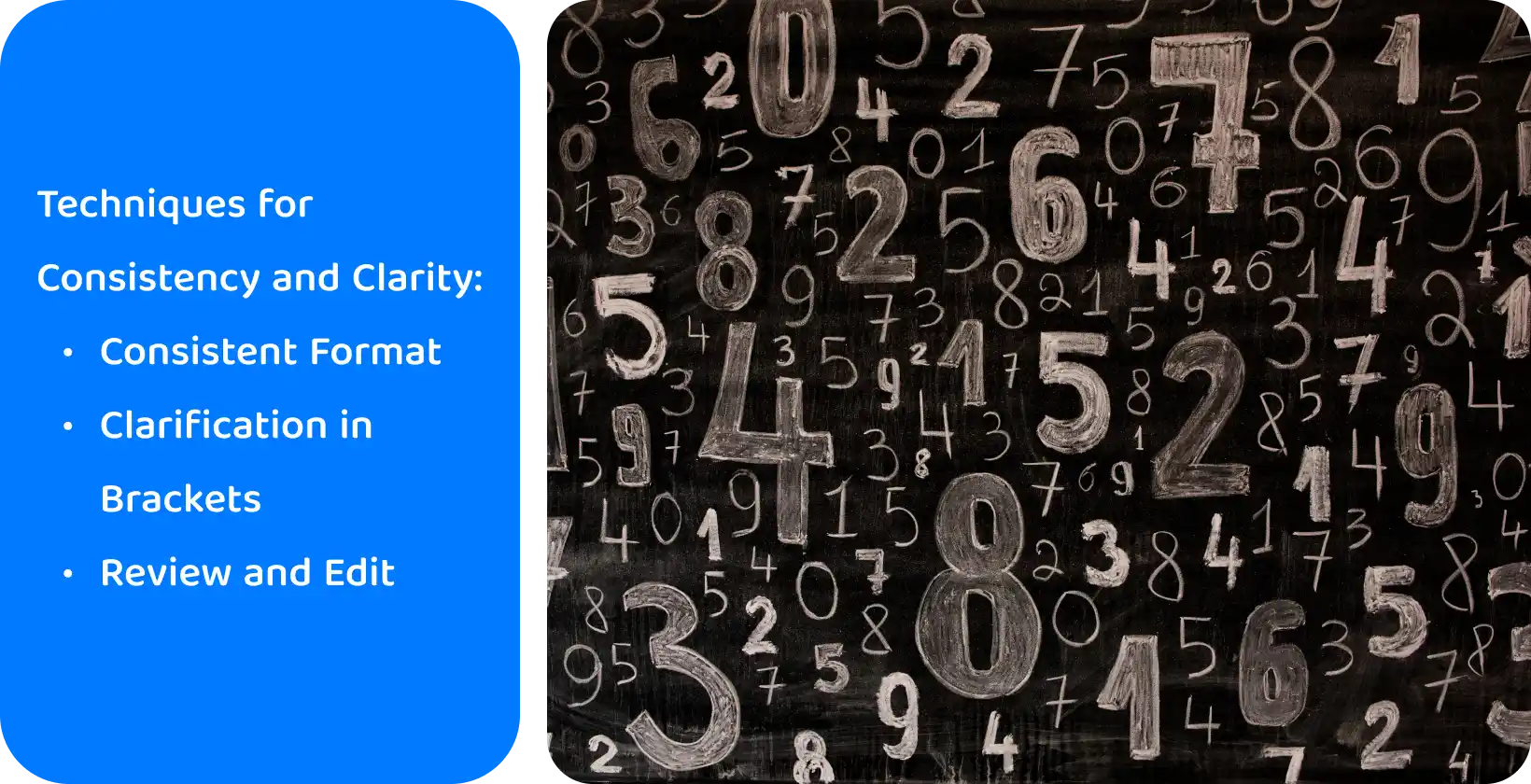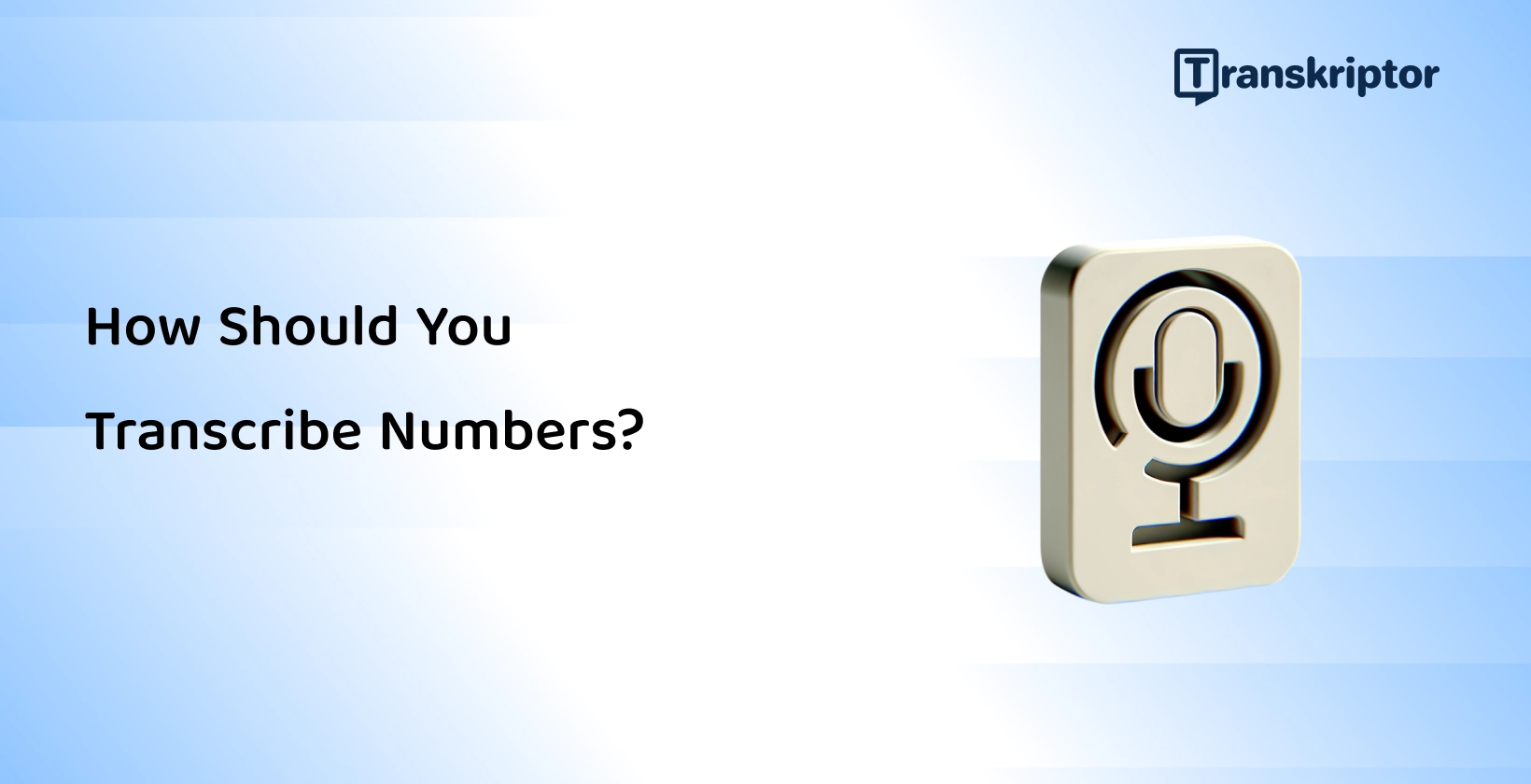Different Contexts for Number Transcription
When you think about transcribing numbers, the first step is to consider the context in which they appear; numbers can represent everything from dates to quantities, measurements to financial figures and more, and each of these contexts may require a different approach to transcription. For instance, while transcribing a financial report, precision is paramount, and you’ll want to make sure that every number is transcribed exactly as spoken. On the other hand, in a casual conversation, rounding off numbers or using approximate terms might be acceptable.
Understanding this context not only helps in deciding how to transcribe the numbers but also in maintaining the tone and accuracy of the original audio; this includes being mindful of elements like slang in clean verbatim . In short, it’s essential to keep in mind who will be using the transcript and for what purpose.
Rules and Guidelines for Transcribing Numbers
When diving into the rules and guidelines for transcribing numbers, a few key points should guide your approach:
Exactness vs. Approximation
Always transcribe numbers exactly as they are spoken in contexts where precision is crucial, such as legal or medical recordings. In more informal settings, it may be appropriate to use words like "about" or "approximately" if that reflects the speaker's intention.
Spelling Out Numbers
As a general rule, numbers one through nine are typically spelled out, while numbers 10 and above are written as numerals. However, this can vary based on specific style guides or the nature of the content. For example, in a scientific or technical transcript, you might use numerals for all measurements, even if they are below 10, to ensure clarity.
Dates and Time
Dates and times have their own set of conventions, and it's usually best to transcribe them exactly as spoken, but clarity and consistency are key. For instance, if the speaker says "the fourth of July," it's clear to transcribe it as such, rather than converting it to a numeric date format.
Large Numbers and Decimals
For large numbers and decimals, clarity is essential; it’s a good idea to transcribe large numbers exactly as they’re spoken, and use decimal points or fractions as appropriate. Refer to a clean verbatim style guide for additional details on best practices. For example, if a speaker says "one and a half million," transcribe it that way, rather than writing "1,500,000."

Techniques for Consistency and Clarity
Achieving consistency and clarity in number transcription is vital, so here are a few techniques to help, including inclusive education transcriptions :
- Consistent Format: Decide on a format for dates, times, and numbers at the beginning of your transcription project and stick to it throughout the document. This consistency will be able to help readers follow along and understand the content better.
- Clarification in Brackets: If a number is unclear or you need to add context for clarity, it’s a good idea to use brackets to include additional information. For example, if a speaker refers to "a couple of days ago," you might transcribe it as "a couple of days ago [Tuesday, if today is Thursday]."
- Review and Edit: Systematically, you should always review your transcriptions for number accuracy; after all, it's easy to mistype or mishear numbers, so a second pass through the document can catch mistakes and ensure precision.
Tools and Resources for Number Transcription
Several tools and resources can assist with number transcription; transcription software often includes features to help with the accurate transcription of numbers, such as playback speed control and foot pedal compatibility for hands-free operation. Additionally, online style guides and transcription manuals provide detailed advice on handling numbers in various contexts.
At Transkriptor, we offer an affordable, innovative speech-to-text platform that works with unbelievable accuracy, supporting your needs in both transcribing numerical information and transcription for education . With the ability to translate to 100+ languages and accurately apply transcription speaker tags , our service is ideal for both small businesses and larger enterprises alike.
The Bottom Line
Ultimately, how you transcribe numbers can greatly impact the readability and reliability of your audio to text transcript ; by understanding the context, following established rules and guidelines, and employing techniques for consistency and clarity, you can ensure your transcriptions are both accurate and useful.
So, whether you're a professional transcriptionist or someone who occasionally needs to convert audio to text, remember that precision in number transcription is crucial. If you're looking for tools, resources, or support to enhance your transcription skills, especially with numbers, feel free to reach out to us for more information or a customized plan for your needs.

